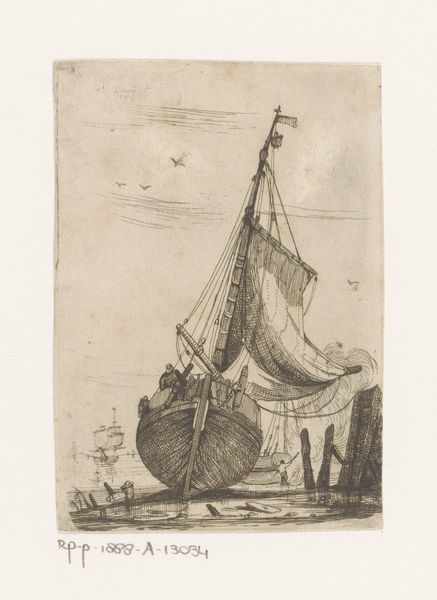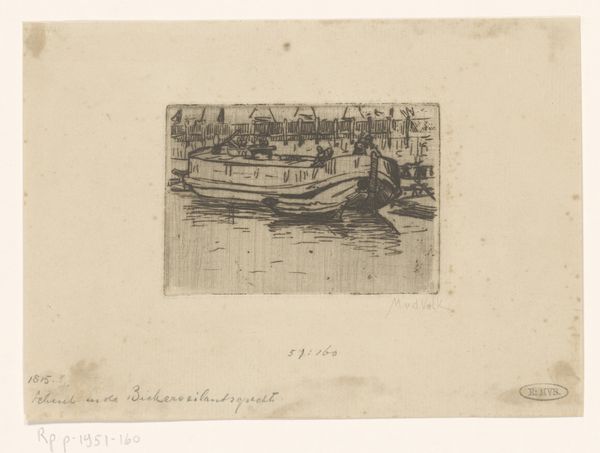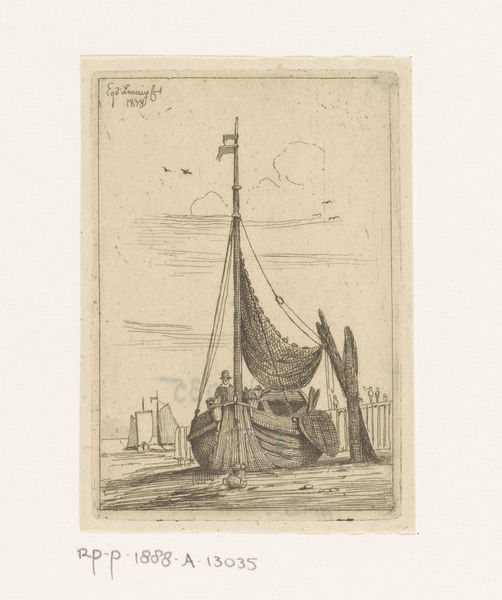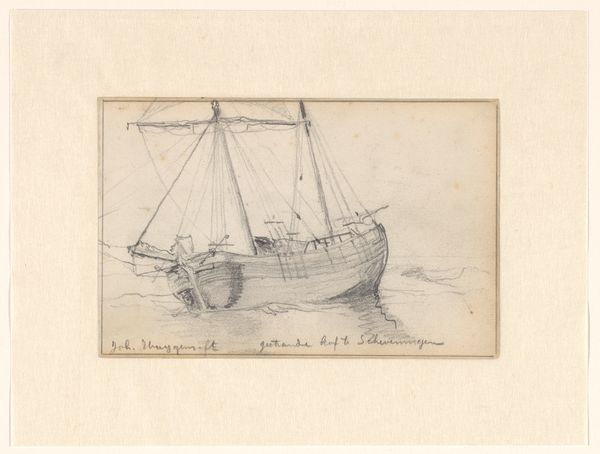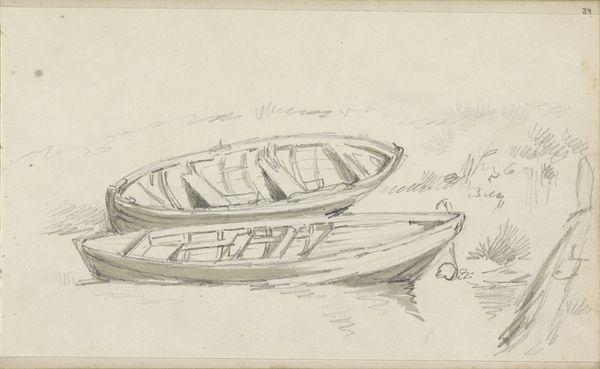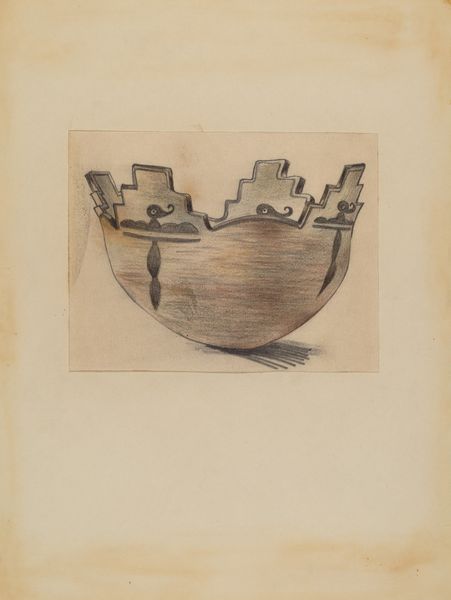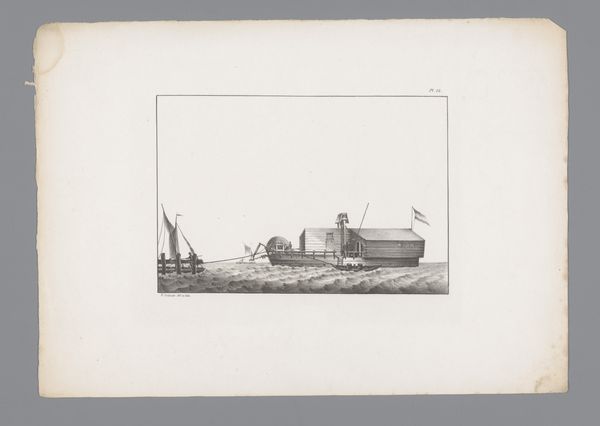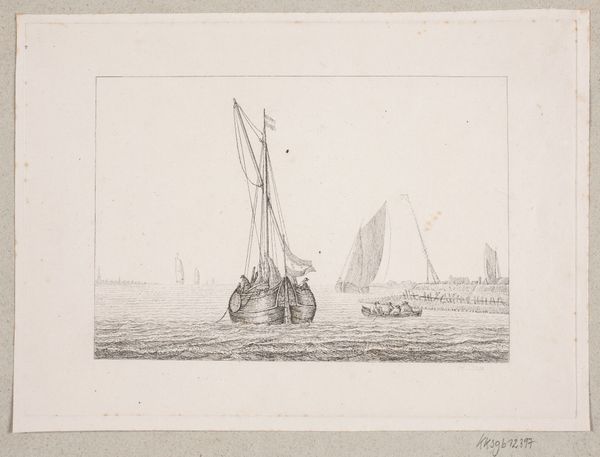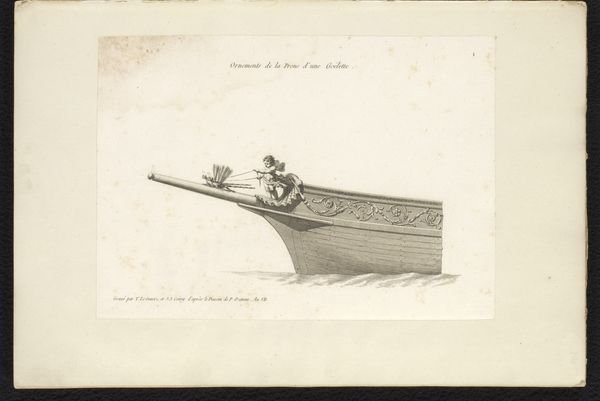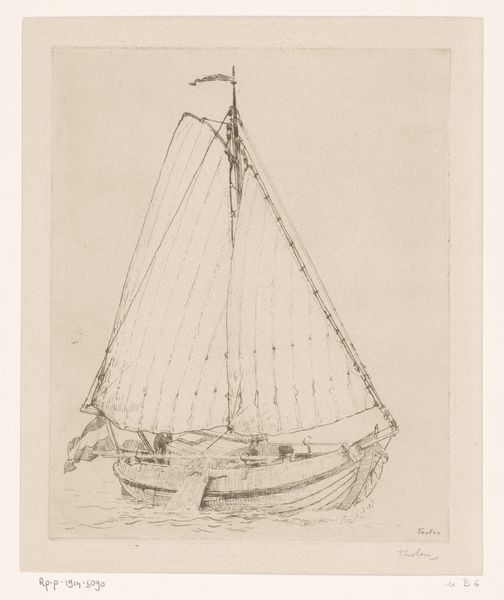
drawing, print, engraving
#
drawing
# print
#
landscape
#
geometric
#
line
#
engraving
Dimensions: height 210 mm, width 180 mm
Copyright: Rijks Museum: Open Domain
Curator: I find myself drawn to the almost fragile detail in this engraving titled "Zeilschip van Dirk van Paeschen," dating back to 1847. The artist is Jean Théodore Joseph Linnig. What catches your eye first? Editor: The sheer density of the lines is what stands out. It creates an impressive sense of volume and depth despite the print's likely small scale. There's almost a palpable feeling of weight and size in the ship itself, countered by the intricacy of the rigging. Curator: Absolutely. What’s remarkable is how Linnig captured a historical fascination with ships during a time of increasing maritime trade and exploration. Vessels such as this were significant symbols of power. Their depiction also spoke to the growing middle class, which could purchase artworks such as this. Editor: And consider the way Linnig guides our gaze—from the detailed hull, rising to the masts, and then gently downwards along the rigging to the tiny figures. The geometric structures offer balance and unity despite the complexities of the design. There's almost a mathematical quality to its aesthetics. Curator: True. The detail of those figures gives life to the otherwise static scene. Notice too, the flags, indicating perhaps national identity or mercantile status, details incredibly important in understanding maritime politics of the period. Engravings were an accessible medium and often circulated widely, playing a significant role in shaping public perceptions of Dutch maritime capabilities and the ships in question. Editor: Yes, the artist truly captured a zeitgeist. Thinking purely visually, one could argue it encapsulates semiotic theory beautifully. All those details contribute to our overall understanding of what we are looking at—it invites deconstruction to discover deeper meaning. Curator: Agreed. When we interpret art in relation to culture and politics, we deepen our experience of not just art but its lasting relevance. The print provides not merely an image, but it can offer insight into a complex moment of transformation. Editor: Quite right. We gain new visual perspective while allowing art to challenge existing historical thought. Ultimately it is our understanding, appreciation, and perhaps curiosity that have the ability to shape and preserve what endures.
Comments
No comments
Be the first to comment and join the conversation on the ultimate creative platform.
